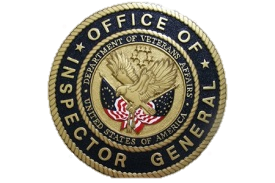Protect Your Practice with a Strong Chiropractic OIG Compliance Program
 At KMC University, we know that an effective OIG compliance program isn’t just paperwork — it’s a living, working plan designed to protect your practice, your patients, and your peace of mind.
At KMC University, we know that an effective OIG compliance program isn’t just paperwork — it’s a living, working plan designed to protect your practice, your patients, and your peace of mind.
The best chiropractic compliance programs are scaled to your practice’s size and unique needs. With the right foundation, you can reduce risk, strengthen integrity, and show your commitment to ethical, compliant care. Therefore, investing in a solid plan benefits everyone — from your team to your patients.
Why Compliance Matters
OIG audit findings consistently cite one root cause—no formal compliance program. It’s not just about compliance; it’s about protecting your reimbursement, your reputation, and your future.
What’s Included in Your OIG Compliance Program
When you implement KMC University’s OIG Foundational Compliance Implementation and Training Program, you get everything you need to begin to create a sustainable, audit-ready system. For example, you receive:
- Baseline Audit (OIG-Required) Includes a comprehensive review of 5 complete provider charts, a coding audit, an EOB (Explanation of Benefits) audit, and a statistical audit. This ensures you know exactly where you stand from the start.
- Full Access to the KMC University Library Explore a robust, easy-to-follow collection of compliance tools, templates, and training resources. Furthermore, these resources help you train your team and keep your program active.
- Compliance Implementation Materials You’ll get step-by-step guides and customizable documents to help you build a plan that works in real life. Meanwhile, our experts make sure you don’t miss a step.
- Dedicated, Certified Compliance Specialist Work side-by-side with a KMC University expert who will co-manage your project and provide personalized guidance. In other words, you’re never on your own.
- Customized Implementation of all OIG Elements Each element of the OIG’s required compliance program will be tailored to your practice’s unique needs. Consequently, your plan fits your office — not someone else’s.
Keep Your Compliance Plan Working
Once you launch your program, it must stay active and up to date. For this reason, most practices spend about one to three hours each month to grow and maintain a healthy compliance plan. This critical investment can make a big difference if you ever face an audit or investigation. Staying proactive is always your best defense.
Pricing
For only $699/month (6-month minimum) you get everything you need to build your chiropractic OIG compliance program core.
*Required baseline chart audits for additional providers are an additional $999 each.
Ready to Get Started?
A strong chiropractic OIG compliance program protects your practice and your patients — and keeps you prepared if the OIG ever comes knocking.
Scheduled a Free Discovery Assessment Today!
You may also like…
-
Solution Consultation
Learn how KMC University can help by reserving a 30-minute consultation with one of our certified specialists.
$ 99 Learn More -
Library Membership | Annual Subscription
It's the largest collection of coding, compliance, and reimbursement material in chiropractic.
$ 149 / month Learn More